#Dynasty Warriors 1
Explore tagged Tumblr posts
Text
#Shin Sangoku Musou#Dynasty Warriors#Sangoku Musou#Dynasty Warriors 1#Zhuge Liang ~ Fierce Fighting Version#Zhuge Liang#Fierce Fighting Version#Shu#Koei BGM Division#music musou#tune warriors
17 notes
·
View notes
Text
Koei Warriors Retrospective Part 1: Dynasty Warriors 1 & 2


Dynasty Warriors (三國無双) Platforms: PlayStation Release dates: Japan: 28 February 1997 USA: 27 June 1997 Europe: 10 December 1997 (source)
On 31 May 2024, Dynasty Warriors Origins was announced for a 2025 release. I thought they would have gone the way of the iPhone and named it Dynasty Warriors/Shin Sangoku Musou X in all regions, but it is what it is.
Over the past few years, I've been slowly rekindling my love for Koei Tecmo's Warriors games after leaving the fanbase in 2018 for various reasons including the dumpster fire that was Dynasty Warriors 9. After being delayed for two years because of projects and real life getting in the way, I've finally found an opportunity to begin my Koei Warriors Retrospective, and not too soon as well (at the time of writing).
As I said in my 1000th Post Special that acted as the introduction to this series, I'm going to be reviewing each generation of Dynasty Warriors, Samurai Warriors and Warriors Orochi games along with their expansions and spin-offs. Without further ado, let's begin the relaunch of the Koei Warriors Rant Series with the OGs, Dynasty Warriors 1 and 2.
Dynasty Warriors
Dynasty Warriors 1, more commonly known without the number, was originally released in 1997 for the PlayStation 1. It's a fighting game more akin to Street Fighter as each of the buttons perform or block against slashes and thrusts and moves are performed by combining button inputs.
Playing Warriors games for many years has made me accustomed to the format of a button being assigned to a function, plus buttonmashing is my thing, so I wasn't necessarily accustomed to playing fighting games like this. Initially, I tried playing this game a few times but I couldn't get the hang of the controls enough to land enough hits on my opponents, which made me want to reconsider reviewing this game that seriously. As I wrote this review, I got the idea to try performing Musou Attacks in the Practice mode and once I got the hang of it (on top of setting the CPU difficulty to Very Easy and changing the controller settings to make use of the triggers), I was able to fight effectively. Musous can be interrupted or countered, so this is something to note.
The characters introduced in this game are as follows along with the stages during which they appear in (the time of day varies depending on who you play as and against):
Shu - Changban (Yellow)
Zhao Yun
Guan Yu
Zhang Fei
Secret: Zhuge Liang (Wuzhang Plains)
Wei - Guandu (Green)
Xiahou Dun
Dian Wei
Xu Zhu
Secret: Cao Cao (Great Hall, Shang Yong aka Xuchang, like why couldn't you just have used that name)
Wu - Chibi (Red)
Zhou Yu
Lu Xun
Taishi Ci
Secret: Sun Shangxiang
Other - Various (Blue)
Diaochan (Phoenix Palace)
Lu Bu (Hulao Gate)
Nobunaga (Hulao Gate)
Toukichi/Hideyoshi Hashiba (Xuchang)
Typically the format for the game is as follows - you play a character from Kingdom 1, fight against three characters from Kingdom 2, then Diaochan, then against three characters from Kingdom 3, then Zhuge Liang or Cao Cao, and finally Lu Bu for 9 rounds in total. The secret characters can be unlocked by playing the game with all characters, then pressing button sequences on the title screen for Sun Shangxiang, Nobunaga or Toukichi.
The character voices in this game are entirely in Japanese due to it being Koei's first game to be localised to the West. The name display and announcement settings can also be changed in the settings. The Japanese version allows you to select how the character names should be displayed, either with the Kanji only, the Japanese pronounciation or the Chinese transliteration, aka their English names. Both versions allow you to change the announcement from their selection phrase to the character's name in Chinese, or rather, Masaya Onosaka's attempts at saying their names. The Japanese version also adds a female voice saying the character's name in Japanese as an option (either Rika Komatsu or Eri Uwagawa, I'm not too sure). Even with the Chinese voice, Nobunaga's name is still in Japanese and Toukichi's name isn't voiced for some reason in either Chinese or Japanese.
Aside from the 1P Battle (Story Mode) and the 2P Versus modes, there is also a Team Battle Mode (a 3-vs-3 tournament), the Tournament Mode (an 8-character elimination format), a Time Trial Mode (same as 1P Battle but in a time trial format), Endurance Mode (where you defeat as many opponents as you can with one life bar) and finally, Practice Mode, where you can test out characters. Note that your game difficulty settings will not affect the CPU difficulty in the Time Trial and Endurance Modes.
The ending image song for this game, Blue Sky Blue, So Blue, was sung by a Chinese girl group known as Seirei Bishojotai Ceres (聖麗美少女隊セレス), or by its real name, 青春美少女. The group was made up of Liu Ying, Li Yan, Hu Jing, Jiang Zhong Yi and Xin Xin. The writer and composer, Maiko Kikkawa, changed some of the lyrics and finished the song as a self-cover known as Sora no Kakera (そらのかけら), which was used as the first ending theme for the anime series Bomberman B-Daman Bakugaiden in 1998.
The group has been through four generations, with the aforementioned five making up the first generation disbanding in May 1999. Their agents went through quite a few lawsuits back then as their activities were apparently affecting the girls' education. As a result, the second generation only lasted four months before three of them left and had to be replaced, creating the third generation. The fourth generation was formed in 2003 after the disbanding of the third and the current lineup has lasted to this day. Talk about 30-year-old teenagers lol.
I initially thought that this game was difficult until I finetuned the settings and got the hang of it. Anyway, this isn't what I'm really here for, so let's quickly move on to...
Dynasty Warriors 2


Dynasty Warriors 2 (真・三國無双) Platforms: PlayStation 2 Release dates: Japan: 3 August 2000 USA: 26 October 2000 Europe: 24 November 2000
And so we come to the game that paved the way for the hack-and-slash genre. This game was originally meant to be a sequel fighting game, but it was changed as the genre was becoming more of a niche (not that that stopped Tekken and Street Fighter). With the new game intended to be made for the PlayStation 2, its stronger graphic capabilities allowed battlefields to be realised.
This is normally where I would cover the Xtreme Legends expansions for the mainline games, but given the nature of the first game and the length of that review, I've decided to cover this game as well. Honestly, I was tempted to review each game individually, but the problem with that was what I would do when I got to a game I wouldn't be able to play for this review.
In Japan, this game was released as Shin (True) Sangoku Musou (真・三國無双) while in the West, this game was released as Dynasty Warriors 2. This would begin a numbering tradition where subsequent games in the West would be numbered one more than their original counterpart.
The characters from the last game are carried over to this game with additions to all factions. Adding new characters would become a staple of future sequels and later, spinoff games.
Shu
Liu Bei
Ma Chao
Huang Zhong
Jiang Wei
Wei
Xiahou Yuan
Zhang Liao
Sima Yi
Wu
Sun Jian
Sun Quan
Lu Meng
Gan Ning
Other
Dong Zhuo
Yuan Shao
Zhang Jiao
The main story mode in this game is known as Musou Mode. Characters in Shu, Wei and Wu play the same five stages for each kingdom as follows:
All kingdoms
Yellow Turban Rebellion
Hulao Gate
Shu
Changban
Yiling
Wuzhang Plains
Wei
Guandu
Chibi
Wuzhang Plains
Wu
Chibi
Hefei
Yiling
The battle system for this game is a 4-hit combo system, that is, you can perform up to 4 levels of Normal Attacks by pressing the Square button. At the same time, you can perform up to 4 Charge Attacks by pressing the Triangle button on its own or in conjunction with other attacks. Typically, the C1 breaks enemies' guards, the C2 knocks enemies into the air, the C3 stuns enemies, and the C4 sends the enemy flying away. The Musou Attack is performed by pressing Circle when the gauge is full, which can be filled up with attacks. Guarding, jumping and sidestepping are possible, along with jump attacks, bow attacks and counterattacks. Typically I don't really care for counterattacks because it's so hard to get the timing right, but that's a thing I guess.
Practically all of the new characters debuting in this game have cloned movesets. Most of the sword-wielding characters (including Sima Yi and Zhang Jiao) share their movesets with Liu Bei, while other debutants share movesets with each other. Cloned movesets have been criticised by fans, particularly with their use in future games. I'll elaborate on this in future instalments.
There are two main problems that you can encounter in battle. One of them is that once you hit an enemy, your character will keep going in their direction and you aren't able to rotate towards other enemies around you. This is a phenomenon known as "charge lock" or "lock-on" that would be resolved in future games. The other one is that when you knock enemy officers back, they will typically recover their health, oftentimes recovering their whole life gauge so you have to start all over again. The AI can get fairly aggressive compared to later games, to the point where playing this game on Easy is equivalent to playing on Hard in the modern series games.
In this game, you start with two bodyguard soldiers, but as you level up, you can get up to 8 bodyguard officers. Enemy officers will typically have horses so you can knock an officer off and take their horse to attack, however enemies that you trample dead don't get counted to your KO count. There's also another problem where you can't pick up items on horseback, which is also resolved in future games. As I'm playing the Japanese version of the game, there is no way to save your progress. This capability has been added to Western versions (presumably due to feedback given the gap between releases) by finding memory card items in crates.
After playing with one character from each kingdom, you can unlock Free Mode, which also allows you to play as the other faction in battles (if not already playable through Musou Mode). It's also a good more for grinding character growth, even if you play on Easy and are constantly stuck with +1/+2 boosts. The BGM test feature is also unlocked along with the opening edit movie, which allows you to create a custom opening cutscene montage with different characters. The opening edit feature was inspired by a fan of Xu Zhu who made a fan edit linking together the different ending cutscenes from the first game.
Although I initially believed that Dynasty Warriors 1 and 2 didn't have any English voices, let alone Japanese voices due to most of them being grunts and wails, Dynasty Warriors 2 does include more voiced lines than the first. Where the first game only had officer selection lines and victory lines, the second game adds voices to cinematic movies that appear between battles (different to in-battle events). After looking up some of the names in the English credits, I found out that they were also featured in Japanese-produced English dub works, such as Iron Chef, Shenmue and the Ultra Galaxy Fight series, meaning that this game was dubbed in Japan by a company known as Movie Television Inc. I guess that's the reason why those English voice actors were credited.
This game did not receive much attention and the initial shipment was only for 100,000 copies, with the popularity going to Kessen, which was released earlier that year as a launch title for the PS2. Despite this, Dynasty Warriors 2 ended up selling well through word-of-mouth, a marketing strategy that would prove detrimental when it came to certain decisions being made in later years.
The ending song for this game is Can't Quit This!!! ~ KNOCK'EM OUT ~ by m.o.v.e, which is used in the credits.
Rant: Why localise?
As the Koei Warriors Retrospective is a spiritual sequel to the Koei Warriors Rant Series, I want to include a rant in each mainline instalment. This time, I want to ask the question, "Why localise the games in the first place?"
During the events of 2017, one of my haters made the argument that the target audience for these games is not Westerners, but only Japanese because the market is too shallow and game companies wouldn't make a profit from them if they released their games abroad. Naturally, I called bullshit on that right away, because if that was the case, why would Japanese gaming companies set up international divisions? Why are Japanese gaming franchises popular with Western fans? Why would Japanese gaming companies continue releasing games in the West if they thought it wouldn't make a profit?
See, the argument that "the target audience is only Japanese people" can only be made if a company's offerings aren't regularly being released to the West (preferably by the company themselves and not through third-parties). This is an argument that you can make for tokusatsu, particularly Toei's Super Sentai and Kamen Rider franchises, as uploads of clips and compilations are frequently demonetised and taken down due to them not believing in the Western doctrine of "free use", yet the only Western releases we get are basically a trickle stream with no clear plans for the future, although I wouldn't rule out Hasbro getting in the way even if such plans existed.
"But then why release the games to the West in the first place?" After thinking about it years after, it's very likely that the first attempts at localisation were to test the waters for Western markets, hence why the dub for Dynasty Warriors 2 was produced in Japan before moving to North American studios for future dubs (like most localised Japanese games). When companies continue to release future works to the West, it becomes a habit for the company and an expectation for the fanbase the longer it continues. And as long as the money keeps coming in, it's very unlikely that they will stop localising anytime soon.
However, as I speculate in future instalments, it can be concluded that Koei Tecmo does seem to prioritise the opinions of their Japanese and Asian fanbases more than their Western fanbases. Even with that atypical Japanese sense of xenophobia that foreigners are unfamiliar with, it sometimes does feel that Western fans are being treated like dogs and being fed scraps left by the Japanese companies, even if companies go out of their way to seek the opinions of international fans in future years. At that point, you can probably make an argument about certain fans like community managers and influencers claiming to speak for entire fanbases, but that's an entirely different story and I'm totally not one of those people lol.
In the end, while I do concede that the hater may have had a point (especially given that Tsuburaya has really put Japanese-based English voice actors to work in recent years), I'm not giving him the satisfaction of being correct because he was still wrong about the whole thing. Maybe they might have known better if they kept playing localised Japanese games past the year 2000.
Dynasty Warriors 1 began the dive into ancient Chinese history through an adaptation of Romance of the Three Kingdoms, while Dynasty Warriors 2 became a groundbreaking title with much potential that would gradually be realised and improved in later years. It's honestly hard to judge older games on their own merits when you're accustomed to playing newer games, but as this series goes on, you'll see how the series gradually improves or deteriorates.
That's it for Dynasty Warriors 1 and 2. Next time, the Xtreme Legends begin with Dynasty Warriors 3.
#dynasty warriors#dynasty warriors 1#dynasty warriors 2#koei tecmo#koei warriors#koei warriors retrospective
2 notes
·
View notes
Text
#I posted this 1 hour ago and we already have fallen brothers#Let's see how much more can fall#Also honestly this video was supposed to be about the nice things inside space marine by Ian Watson#But both instagram and tumblr would ban my whole dynasty if I write those things#Enjoy#Warhammer#Warhammer 30k#Warhammer 40k#Iron warriors
287 notes
·
View notes
Text


art from a year ago cause i came across these when browsing my files and i dont think ive posted them before, i really like them!
#my art#dynasty warriors#gan ning#posting this thinking about nei-ning :] the no.1 gan ning fan hehe#i dont use the same brushes anymore as in the first but i would like to revisit them to get this sketchy style again#as for pencils - i rarely am this happy with traditional art; i believe this one was done in class which was somehow the only place#where i could get nice results; i dont get how lol#i miss drawing in pencils too but lately i couldnt get much right. its mostly the lack of ideas though? i remember doing that one inspired#by some dw9 photomode pics i think? helps with posing and all that#yes i remember that was from a screenshot. if it was from class then i must have had my phone out for reference lol#but the first oneee i love how i did his face there!! and everything. i wont top that
37 notes
·
View notes
Text
Watching the Dynasty Warriors movie so you don’t have to and… uhhh… random thoughts.
- THEY WAXED CAO CAO
- Liu Bei kinda fine tho…
- That Guan Yu beard ain’t sexy enough
- Why does Zhang Fei look like the costume designers just stuffed a pillow in the actor’s shirt?
- Not enough cooky wizard Zhang Jiao. He just bails.
- They did put in that part where Cao Cao accidentally murders his uncle’s family before immediately murdering his uncle.
- Yuan Shao slays so hard but looks so out of place. Could’ve went with his DW3-5 looks instead.
- Sun Jian just casually bringing his 12 year old Sun Quan with him to a war council. 10/10 I expect nothing less from Tiger daddy.
- That sequence of Hua Xiong sending heads to the Coalition by swinging em like it were baseball made me laugh. 11/10.
- Oh my lord they try so hard to make Lü Bu look like this big bad pure evil man who embodies all that is evil TM and hitting almost all the cliches. And he just looks like a murderous wet puppy and that’s fine by me, y’all know how much I love it when Lü Bu looks like a wet puppy. I do appreciate how he appears smarter tho so this Lü Bu gets a few points.
- WHY DO I UNIRONICALLY PREFER THE DW MOVIE LÜ BU OVER THE ACTUAL DW LÜ BU’S! WHAT IS WRONG WITH ME?!
- Unfortunately there was no Spanish dub because I would have started calling Lü Bu “El Lobo” and played Wolf or Growl by EXO in the background. Cause Lü Bu sounds rather close to Lobo which means wolf in Spanish and I often associate him with wolves cause in Wo Long I thought he had a wolf cut with those bangs.
- Costumes look great ngl.
- Beautiful sets.
- Thinking of DW with a lot of blood is kinda horrifying ngl.
- Glad they didn’t subjugate Diao Chan’s actress to that DW8 fit. *shudders*
#I am watching it online btw#I think I should go watch better C-Dramas after this.#I didn’t finish the movie yet. Only 1/4 left.#Do I recommend? With some drunk friends and a lot of alcohol yes.#dynasty warriors#san guo#romance of the three kingdoms
10 notes
·
View notes
Text

i think both are attractive but fa zheng is just ...different
shoutouts to: @basslinegrave for the idea
#thinking on it some more they're light and dark modes of each other#for the record i only find dw9 guo jia hot his in game model got a weird glowup that i cannot explain#fa zheng has been hot for 1 and a half games#and that is more than guo jia so he wins some arbituary competition i just made up#dynasty warriors#guo jia#fa zheng#replaced human resources with xun yu because that what he is#dont look at the fact cai wenji is calling a phone that doesn't connect to anything#posting to this blog with the consistency of a snickers bar#im not a very organized person#i only wish to spew musou shitposts
38 notes
·
View notes
Text
Finally tried out Ghost Trick tonight
#vu's posts#i downloaded a bunch of demos for interesting-looking games to my switch last month#and that was one of them... it's weird because despite being a long-time ace attorney fan i never thought to check this game out#but honestly? so far it's really good. and no joke i kept saying 'oh yeah i can *see* the shu takumi writing style here'#i really enjoyed great ace attorney (which he also wrote) a year and a half back so i think i'll really enjoy this too#i also tried out... spiritfarer... hyrule warriors... and octopath traveler 2. couldn't get into any of them honestly.#SF falls into the 'cozy' game genre... and i fucking hate that genre. it's so boring.#i could talk about my disdain for that genre as a whole some more 🤢 but i will spare everyone reading this.#hyrule warriors was a letdown because... i guess i just dislike that style of gameplay?#this was my first time trying a dynasty warriors-type game... and i had a feeling that i wouldn't like it. it's a shame i was right though#and as for octopath traveler... i think i'm willing to give it more of a chance? but at the same time...#It's a turn-based jrpg. and between p5 and pokemon i'm kind of burnt out on that genre#i want to give it another chance because i might actually really enjoy the writing... but idk if i can tolerate the jrpg gameplay 😬#OH#i also started on alan wake and death's door last month... so far so good on both.#AW is one of those games that my bslur 1 was OBSESSED with when i was younger. so that's been my connection to it for years#never thought that i'd care about it at all but.. yeah it's actually pretty good so far#death's door is hella fun so far... it was slow at first but i'm really enjoying myself with it now#but yeah. i'm gonna go to bed now... que tenga una buena noche 👋
3 notes
·
View notes
Text

[normal voice] I am the only person who understands Kingohger <-madman who has played every single Dynasty Warriors game from 2003 on & most of the Samurai Warriors games too & considers Romance of the Three Kingdoms, Records of the Three Kingdoms, & The Art Of War as supplementary fandom texts
#do you understand me. if not. let me explain to u#said normally#by the way Dynasty Warriors 3-5 and Samurai Warriors 1 & 2 are easily found and played on PCSX2#while the best Dynasty Warriors game which is Dynasty Warriors 8 Xtreme Legends Complete Edition is available on Steam for purchase Now#there's also like cutscene compilations on youtube I guess. is this enough tags for this post not to show up in the tracked tags we'll see#Royal Sentai Kingohger
4 notes
·
View notes
Text
Fun Fact!: 98% of people making fun of Dynasty Warriors for being "that dumb series where you mash a button to kill 200 guys" have not actually played any Dynasty Warriors games.
Because if they did, they would ALSO complain about how you can fail a mission 12 times because you killed everyone, but couldn't figure out what the mistranslated objectives expect you to do by a certain time.
Honestly this series has more in common with Dead Rising. Like you can always just go off and have fun doing mass murder. But to actually play the game as intended, you need to carefully plot things out and pay attention to what is happening, when.
Which is why I, the Most Impatient Man Who Ever Lived, am terrible at both of them. But I respect the idea!
0 notes
Text
An interesting historical fact is that 1 in every 50,000 humans born with the capability of doing dynasty warriors shit to destroy entire armys in 8 secons
5K notes
·
View notes
Text
Main types of Chinese Opera pt. 1


There are many different types of chinese opera, so here are some of the main ones!
Peking Opera 京剧 (Jīngjù)
This is probably one of the most well-known operas, originating from Beijing during the Qing dynasty. There are 4 main roles:
1.生 (shēng), which is usually an older dignified male character such as a scholar, which can be divided into older, younger and martial 生 aka 武生 (wǔshēng)
2. 旦 (dàn), a female role which was previously played by men as women were not allowed to perform during the Qing dynasty, but nowadays both men and women can play this role. This role has several subtypes:
闺门旦 (guīméndàn), a young unmarried high-status virtuous woman, whose main focus is singing.
正旦 (Zhèngdàn)/青衣 (Qīngyī), an elegant, middle-aged, usually married woman who mainly sings.
花旦 (Huādàn), a young woman who unlike the Guīméndàn focuses on speech and movement.
武旦 (Wǔdàn), this is a martial arts role with quite a lot of stunts and fighting with rare singing moments
刀马旦 (Dāomǎdàn), a young brave warrior, who usually focuses on acrobatics, singing and dancing unlike the Wǔdàn.
老旦 (Lǎodàn), is an older female role, usually with a lower singing voice.
彩旦 (Cǎi dàn), is more of a clown role, which is apparently more commonly performed by men
4. 净 (Jìng), a "rough man" role, usually has a vibrant and strong character, which has heavy face painting.
5. 丑 (chǒu), the clown role, which is one of the most physically demanding roles due to the acting and acrobatics combo, despite being considered as a minor role.
There are over 1400 stories used in Peking Opera, with 2 traditional types, civil and martial. Civil focuses on the relationship between the characters and is usually about normal daily occurrences, whereas martial is more about action and fighting. Another more modern type of differentiation divides the plays into traditional (pre-1949ish), plays created after 1949, and contemporary plays.


Kunqu Opera 昆曲 (kūnqǔ)
This is one of the oldest types of Chinese opera, originating from Kunshan, combining signing, dancing and martial arts. It features similar characters like the Peking Opera with another character 末 (Mò), who is an old man with a long beard.
However, there are some differences, as Kunqu uses softer, melodic music and different instruments such as the flute as the main accompanying instrument rather than Peking Opera's stringed instruments. The types of stories are also different, as Kunqu's focus more on the romantic and poetic aspect, exploring various classical stories. Peking Opera's stories tend to be a bit more varied as previously mentioned.
Traditionally, Kunqu was mostly for the upper-class as the stories performed were classical Chinese literature, and at the time not everyone had the opportunity to learn. This may be why Kunqu typically uses classic chinese, whereas Peking uses a combination of both classic and vernacular, making it more available for everyone.


Yue Opera 越剧 (yuèjù)
This opera is also known as Shaoxing opera, originating from Shaoxing, Zhejiang in early 1900s. Originally the performances featured only male actors but nowadays all-female performance troupes are becoming the standard. It's interestingly the 2nd most loved opera type, just after Peking Opera as it's slow and romantic form is perfect for love stories such as The Butterfly Lovers.
Yue Opera also features the usual set of character types e.g. 生,旦 etc. except they are usually played by women.
In terms of appearance, Yue Opera tends to go for a more subtle makeup look (as subtle as stage makeup can be) and simpler but nonetheless gorgeous costumes, in contrast to Peking Opera's dramatic and bursting colors.
Yue Opera usually relies on string instruments, with a smaller musical ensemble and musical accompaniment so that the performers singing is more clear unlike Peking Opera's stronger background music.


#chinese opera#theatre#越剧#昆曲#京剧#peking opera#peking#china#chinese culture#chinese#китай#中国文化#中国#new interest unlocked#slavic roots western mind#opera#kunqu#yueju#yue opera#music
317 notes
·
View notes
Text
#Shin Sangoku Musou#Dynasty Warriors#Sangoku Musou#Dynasty Warriors 1#Guan Yu ~ Fierce Fighting Version#Guan Yu#Fierce Fighting Version#Shu#Koei BGM Division#music musou#tune warriors
13 notes
·
View notes
Note
A piggy back off your last ask! Your AU has me all excited. I'm curious about Zuko and Katara's tenure as monarchs? How did the people receive her as their fire lady?
Also your art is amazing!! Can't wait to see more 🥰❤️
This au is very detailed lol, so if you have questions feel free to ask. Just understand that @shalheretical and I have named lots of places in the atla world.
We’re going to break this into three parts: one on notable events in Zuko’s tenure as Fire Lord; one on Katara’s accomplishments that relate specifically to duties she performed in relation to being the Fire Lady (she did other things outside of it); and a final note on the reception of an outside minority woman as the Fire Lady.
PART I
Immediately after the complete and unconditional surrender of the Fire Nation, all military personnel who are not directly involved in civil administration are recalled back to the Fire Nation—though they must find suitable local replacements and return as soon as possible. The Gaoling Agreement of 101 AG saw the repatriation of 1.3m Fire Nation occupiers from everywhere in the Earth Kingdom but the northwestern Gansai region. Because of this, and a late Azulon policy of Development First, Industry Now, which had 75% of all Fire Nation agriculture halted in favor of industrial development and had most food being imported by way of colonial extraction, the sudden population growth and the fact that they had to move factories and warehouses to start farming again, saw that 53 percent of the Fire Nation was experiencing starvation, and that 16 percent was experiencing acute starvation—5 percent experienced famine. This would be at its worst for the first four years of Zuko’s reign—known as the Rice-Rations Years—but it would only truly stabilize in 110 AG.
A near-complete shutdown of the archipelago’s ports until 103 AG exacerbated this problem. However, this was to prevent, as much as possible, the 3.5m individuals identified as war criminals/accomplices to war crimes from escaping to “safe havens” such as Jinyala, the Si Wong, or Whale Tale Island. No one was allowed to leave the ports without a written order by the Fire Lord. The nascent Earth Kingdom Navy helped patrol Fire Nation waters; these sailors, along with some Kyoshi Warriors, also helped inspect ships leaving Fire Nation docks for potential stowaways. The Earth Navy would stay until 104 AG.
The Boiling Rock was used to hold Tier 1 and 2 war criminals until the Omashu Trials began. After this, the Boiling Rock would be shut down. Non-political Fire Nation prisoners would be moved to more humane prisons; non Fire Nationals would be extradited back to their home nations. Captives—such as Hama, Tyro or the Boulder—were repatriated from the work camps they were imprisoned in.
Shrine consolidation was a Sozin policy of putting all shrines under direct monarchical control and turned over for use of the state religion—Agniyo, the religion of the ethnic majority (Shiboshi) Fire Nationals. Zuko begins a policy of Great Reversal, where these shrines are returned to their traditional stewards. The Intranational Sovereign Rights policies is the parent policy of the Great Reversal. The Fire Nation is home to 98 ethnic minority/indigenous groups (including the Sun Warriors and the Bhanti), with 106 recognized languages and dialects apart from Hokugo (the state language). These are all put under Special Status, where extra government protections and provisions are made to protect traditional Fire Nation diversity. Specifically, local councils are approved to use state funds to protect Status minority religions, languages, ecology/land, food, dance, and arts. The Sun Warriors in particular are given greater autonomy and sovereignty over their ancestral lands.
In 107 AG Zuko made an official declaration to renounce the millenia-old belief that the Liufeng dynasty is in any way divine, or descended from Agni. In apology for these centuries of disrespect towards Mother Agni, a new shrine in the capital of Kazanshi is announced; it is officially completed in 125 AG, and dedicated in 126.
Zaibatsu, vertically integrated business conglomerates, are dissolved; the businesses are put under monarchical control, and their assets are partially used for reparations paid towards the Water Tribes and Earth Kingdom. (Aang turned down reparations outside of help rebuilding Air Temples/shrines, and protections on sacred Air Nomad land, such as areas in Gansai and Whale Tale Island.) Land was seized from landlords and nobles, and sold to their serfs and tenets for extremely cheap prices. This is open to anyway once all serfs and tenant farmers have their share, which leads to some immigration from especially the southern Earth Kingdom.
Starting in 103, all war criminals are prosecuted under Earth Kingdom and Water Tribe officials at Omashu, which only ends in 119 AG, due to the thoroughness of the prosecution. Some critics from the Fire Nation claim that no Fire Nation representatives presented an unfair bias, and Why can’t it be held in the Royal High Courts? Zuko maintains that the Earth Kingdom and the Water Tribe are a lot more merciful than he would be. Note: Iroh volunteered to be tried for the Siege of Ba Sing Se and his March on the Si Wong, even though King Kuei offered him immunity. He was given a postponed sentence of ten years; during this time, he would stay in his tea shop, and most of the money he made would go to helping Go Shi Wai, one of the worst-affected places of the war.
Gansai, later the United Republic, holds the largest number of Fire Nation settlers. This is due to an early Azulon resettlement policy, wherein ethnic minorities in the Fire Nation were resettled in Gansai and away from the imperial core, for Azulon’s All-Shiboshi Empire dream (the officials that ruled them were still Shiboshi, though). There are nearly 4m settlers living there; and since they’ve been outside of the Fire Nation for at least a generation, they are the least willing to move. Gansai was made independent in 115 AG through a referendum that went through every village, town, city, settlement in the region. Many Earth Kingdom citizens still consider this a humiliating capitulation to the Fire Nation, and resent King Kuei for allowing this.
Serfdom and slavery were abolished in the Fire Nation by 105 AG. Looted wealth is confiscated from the noble class, and repatriated to their home countries. The royal coffers do the same. Since the power of the noble class was severely weakened by these moves—and the removal of the zaibatsu system—many enraged nobles would attempt government takeovers—whether through the legals means of an Agni Kai, or through nine different assassination attempts from 105 AG to 127 AG. These, by the way, would only lead to legislation that weakened the noble class even more.
The Fire Nation educational system was technically reformed, though specifically. Zuko was looking to return the institution to its prewar systems, with some amendments. He took a lot of care for educational reforms, because he considered it ground zero for deradicalization policies. Teachers were screened and replaced when necessary; there was a national recall on textbooks, and Zuko commissioned a completely new curriculum. The military education of children from 11 to 16 stayed in place. The national examinations that gave people opportunities to work in government positions were opened up to the merchant and former self classes.
Protections and rights for same-sex couples are restored. Abortion is made legal. Funding goes back to the arts. Overall, Zuko’s policies mark a return to the cultural pursuits from before the war—especially in the arts, education and religion.
PART II
Once again: these are her activities that relate to her acting (somewhat) in capacity to traditional Fire Lady duties. However, a lot of her actions—even when acting as Fire Lady—are outside of traditional royal involvement, which is noteworthy. It should also be noted that she is not a part of the legislative body of the Fire Nation in any capacity, nor is she in any way given any sort of powers of making policies at an official capacity. To me, this doesn’t really matter, because I personally don’t think she’d be incredibly interested in dealing with Fire Nation legislative proceedings anyway, and it’s way more straight forward for her to just tell Zuko what she thinks would be a good idea since he can just enact it immediately. Not that she never influences policies through cooperation with Parliament, just that she normally chooses not to.
She specifically is known for her deep involvement with charity and patronages. She tends to focus on issues involving the homeless, youth, drug addictions, the elderly, environmental protections, illness and minority rights advocacy. It’s due to her nearly weekly visits to hospitals and health clinics across the Fire Nation (and sometimes abroad) that Katara gets very specifically interested in serious and terminal illnesses—the care of their patients, prevention and destigmatization. She’s especially famous for initiating physical contact towards patients with leprosy, to prove that leprosy could not be easily transmitted through casual touch—such as hugs and handholding.
She is president of the Taiyang-jie Childrens’ Clinic in the capital. She is a patroness of the Natural & Geologic Historical Society in Lopyang. She is president of the Royal Academies of Healthcare, Sociology & Philosophy, and Music & Theatre. She is president of the Gojiki Child Association, a charity to care for vulnerable tribal youth. She also works with the National Leprosy Trust, the Fire Nation Centre of Minority Dance and Theatre, and the Imperial Phoenix Hospital.
She was integral to the founding of Taqqittiavak, an international medical association, inspired by witnessing the calamity of war, and how there’s often not enough medics for the wounded, who are often left to suffer and die. She is a patron of the Three Nations’ Doctors League, a similar organization, though Taqqitiavak works in conflict zones, and 3ND in humanitarian crisis zones. She specifically works with them in an anti personnel landmine campaign. Her work directly leads to the signing of the Qiue Treaty to create an international ban on the use of landmines.
She makes regular lengthy visits to the Ruzuro-yeiji Hospital in Kemkami, where she specifically helps in the care and comfort for patients who are seriously or terminally ill—something royalty had never done before. She is a patronesses to the Imrani Cancer Fund, an international charity dedicated to cancer research.
She is the founder of Tunnganiq, an association dedicated to research and care for mental disabilities, especially those acquired in war or in accidents. She regularly supports efforts in the advancement of mental healthcare, institutional reform, and the stigmatization of all psychotic and neurotic disorders. She (and Toph) opened the Centre for Disability and the Arts in Republic City.
She is the patron of the Fire Nation branch of the Nutaraq Appeal, an international organization dedicated to helping pregnant women and new mothers in need around the world.
Katara (and Sokka) launch the International Child Bereavement charity, which seeks to support the children of: military families, children orphaned by war and conflict, children of suicide victims and children of the terminally ill. She and Sokka are also patrons of the Southern Water Tribe Cultural Center in Republic City.
She supports the Laiyi Fund, which is a parent fund to several smaller charity organizations that give accommodations and social assistance to the homeless, and campaigns to destigmatize homelessness worldwide. In general, Katara is very vocal and active in her support of homeless populations, and to end the conception of homelessness being a moral failing in the Fire Nation, especially by regularly working with the homeless directly, without any official means of protection. She supports the Just Homes Initiative in the United Republic, which seeks to “just house them” with no strings attached.
She was awarded the Freedom of Omashu Award, the highest honor in the Southern Earth Kingdom for her humanitarian efforts—as well as the Ba Sing Se Citizens’ Award and being awarded a gold medal in a healthcare conference in Piriyakheri.
PART III
To be honest, her marriage to Zuko really wasn’t a huge deal to most peasants in the Fire Nation—they were so far removed from royal life, that who the current Fire Lord is hardly mattered, let alone who the Fire Lady is. The middle class, especially in major cities like Kazanshi, Kenkami, Lopyang and Kimosaki, and the noble class (especially, much to her embarrassment, Mai’s family, the Keohsos—where the brides for the Fire Lord are traditionally found) were the most vocal in their disapproval of the idea of there being a foreign bride. What if the Fire Lord abandons them (a population that’s starving and struggling) for the South Pole? What if she roadblocks courtly promotions only to Water Tribe immigrants that will surely be used to replace the ethnic Fire Nation population? What if their heir is a waterbender, of all things? Most ire was reserved for Zuko, either way. The Fire Lady is hardly a consideration, at this point in time—the role is prestigious solely because she is the wife of the Fire Lord, who actually matters. Katara is who gives the position prestige and reverence beyond that, through her compassion, altruism and humanitarian efforts, which kind of gave the role of Fire Lady an entirely new role in greater Fire Nation society, outside of just running the household and being the head of the royal family, which doesn’t really affect regular citizens.
Besides, nobles who didn’t know better than to keep it to themselves were pretty readily dismissed from the court and removed from the Caldera—a hugely humiliating experience.
Their wedding is a big deal. Some agitators try to say that they’re wedding, in 106, is a flagrant extravagance when the whole nation is suffering—this is still more of an attack on Zuko, than Katara. The wedding, though a big royal wedding, is mostly used to help lighten the air for the population—it’s an excuse to be off of work for a week, to have fun celebrations, to be with family, to keep up with royal fashion, etc. It’s a reprivement.
Katara becomes somewhat of a fashion icon—not the biggest, by far, but especially her jewelry, accessories and hairstyles take the country by storm. It’s big enough that she’s able to auction off her old clothing and her own beadwork projects for thousands, which she would then donate to places she felt needed the most help. She alone is responsible for making smiling—especially smiling with your teeth—popular in the Fire Nation.
A lot of people really idealized her as a mother, with the way she was regularly seen walking her kids to and from school, and around the capital. She would participate in parent-student events in school, and was known to very rarely use nannies. Unlike other Fire Nation noblewomen, she never once used a nursemaid. She very regularly took her kids on holidays to the Southern Water Tribe. Non-racists in the Fire Nation really admire her dedication and loyalty to her origins and native land/practices. Racists thought she would teach her kids to look down on the Fire Nation and only care for the preservation of her homeland and culture.
A lot of people—especially older, more traditional folks—also thought she acted unbecomingly for a Fire Lady. She dresses casually in deels when not working in an official capacity, regularly goes off to do things without following royal protocol, smiles and waves to crowds and in photos. A lot of people criticize her speeches as being emotional and, occasionally, even hysterical. Her willingness to act outside of capacity and to do things that should be beneath her—in public—was especially condemned.
But overall, she’s been pretty popular from the beginning, and definitely went down as at least one of the most beloved Fire Ladies in history. If not the most.
#zutara#zutarian au#zk#katara and zuko#fire lady katara#ambassador katara adjacent#adult katara thoughts#i will make art of fire lady katara soon i promise#she is princess diana coded 😌#ask yikees
239 notes
·
View notes
Text


partners in crime
#i can post this here too right#i dont wanna hear the 'bb b but ken had a different vibe!!1' well i took something else. whatchu gonna do about it#besides gan ning does have some himbo energy in 6-8 like hes just street smart#is it how thats called? i mean like he can resolve stuff quickly (his way) and deal with stuff but if it came to actual studies hed fail#dumbass but can fight and get thru everything by maiming and killing#like i feel like 6-9 gan ning is somehow ooc when compared to the real thing but so is ling tong so idc. i like these characters not the og#well the og is cool too but you know what i mean#anyway#dynasty warriors#gan ning#ling tong#barbie meme
80 notes
·
View notes
Text


i realized i have the power to make gan ning grimmjow lite and i did
Instead of a panther, it's a tiger
#hi welcome to crossovers no one asked for#am i implying wu are the arrancars#sorta#i originally was gonna 1 to 1 the pose but realized midway asian squat was better#silly little thing#gan ning#dynasty warriors#....? should i even tag bleach with this#sure#ig#bleach
14 notes
·
View notes
Text
Lonely Mountain = Armenia
I have a take to make: Armenian culture is very similar to how I would imagine the culture of the Dwarves of Lonely Mountain.
When you think of the halls of Erebor, images of grand stone halls, intricate metalwork, and proud, resilient people come to mind.
Interestingly, this mental imagery resembles Armenia, a rich and ancient civilization in the Southern (that is important - Armenians are not Caucausians per se, like Georgians and/or Dagestanians) Caucasus region. From the stone-borne proud spirit of the Armenian people to their architecture and traditional clothing, there are fascinating parallels between the two cultures, real and fictional.
1. Architecture: Stone, Fortresses, and Underground Structures
The Dwarves of Erebor are renowned for their skill in mining and stonework, creating vast underground cities with intricate carvings and fortifications. Similarly, Armenian architecture is marked by the use of stone, with many historical fortresses, churches, and monasteries built using basalt, tuff, and other locally sourced materials. These buildings, often nestled in mountainous regions, reflect a deep connection to the earth, much like the Dwarven kingdom carved within the Lonely Mountain.
Examples:
Geghard Monastery: Partially carved out of mountain rock, this UNESCO World Heritage site demonstrates the skill and artistry of Armenian stonework. Its cavernous halls and intricate carvings are reminiscent of the Dwarven halls deep within Erebor.
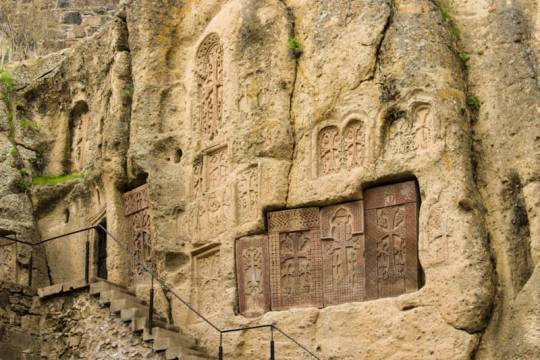
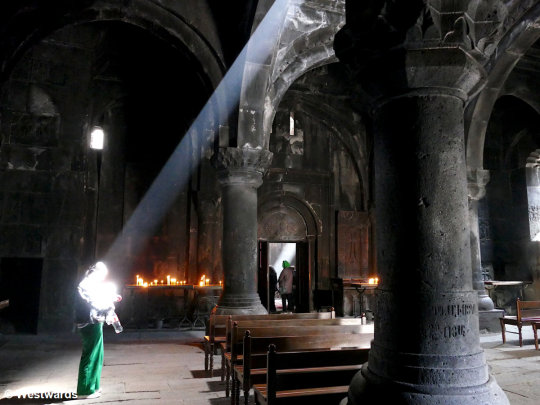
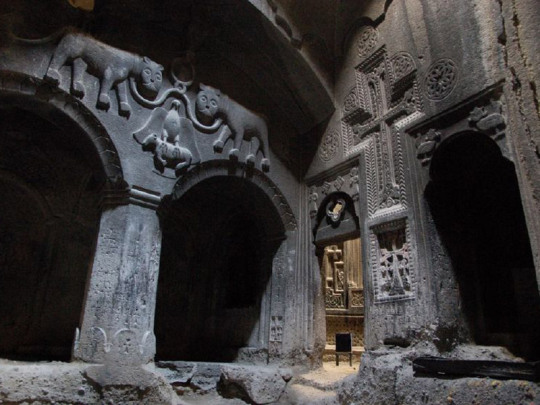
Tatev Monastery: Perched on the edge of a cliff, this fortress-like monastery reflects the grandeur and defensive nature of Dwarven architecture.
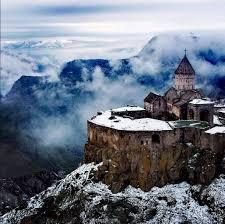
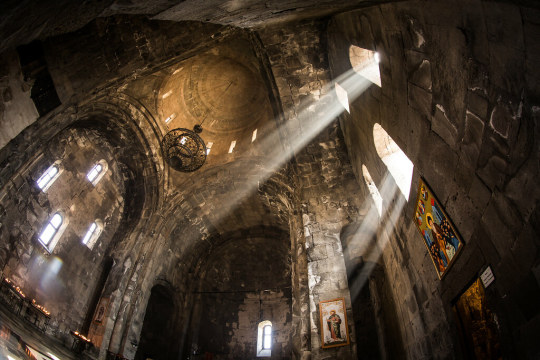

2. Traditional Clothing: Regal, Rich, and Embroidered
Tolkien’s Dwarves are often depicted in elaborate, layered garments with intricate patterns, a testament to their pride in craftsmanship. Armenian traditional clothing, especially royal and ceremonial attire, shares this emphasis on richness and detail. Armenian robes from different historical periods were made from fine fabrics, often embroidered with gold and adorned with jewels, echoing the regal appearance of Dwarven kings and warriors.
Examples:
Royal Armenian Attire: The robes of Armenian kings and nobles during the medieval period were crafted from rich fabrics and detailed embroidery. Visuals of King Gagik I or the attire from the Bagratid dynasty era would illustrate the parallels well.
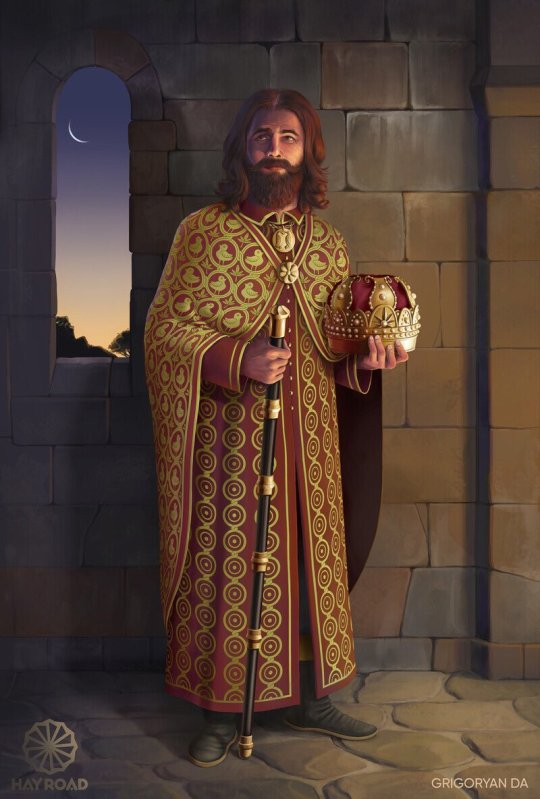
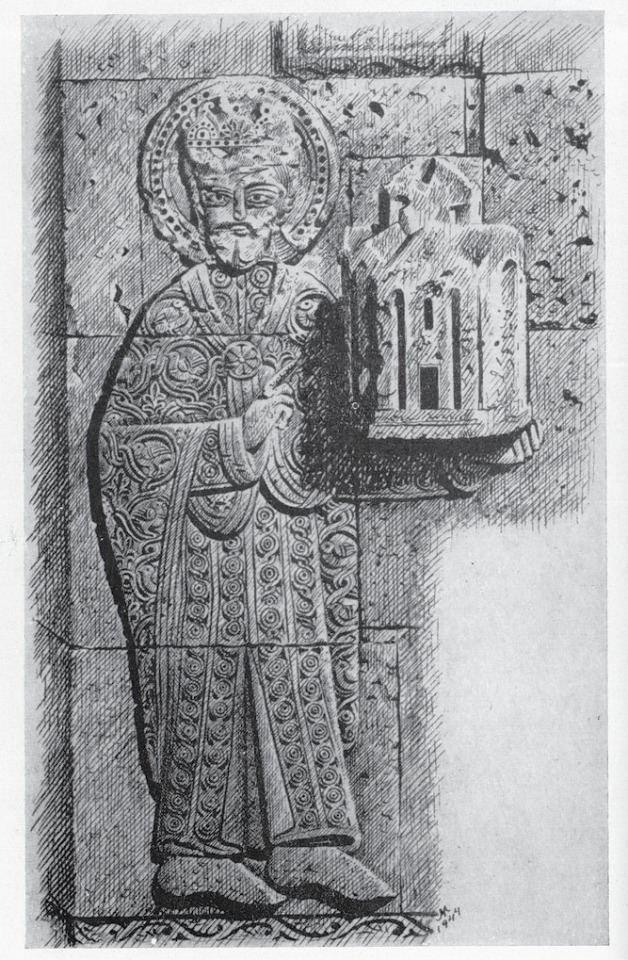
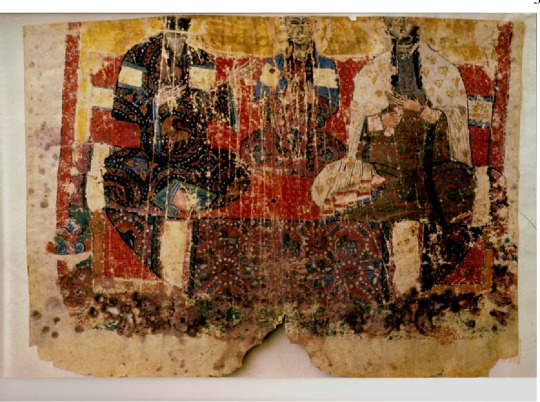
Women’s Embroidered Dresses: Traditional women’s dresses from regions like Syunik and Artsakh, adorned with intricate patterns and gold-thread embroidery, reflect a similar pride in craftsmanship seen in Dwarven culture.
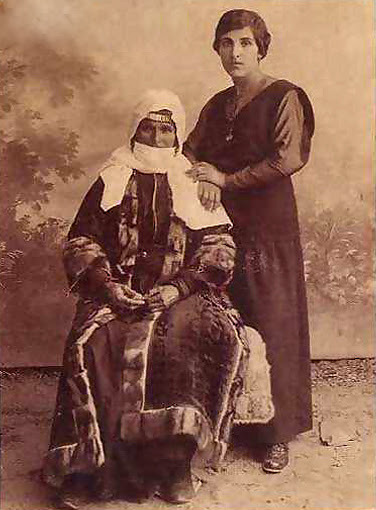
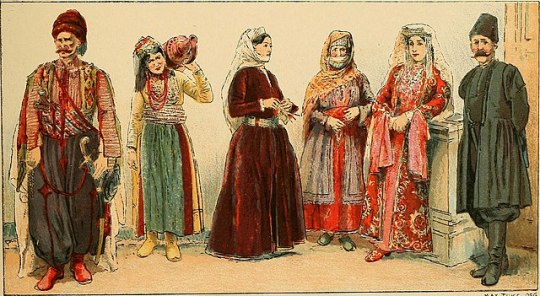
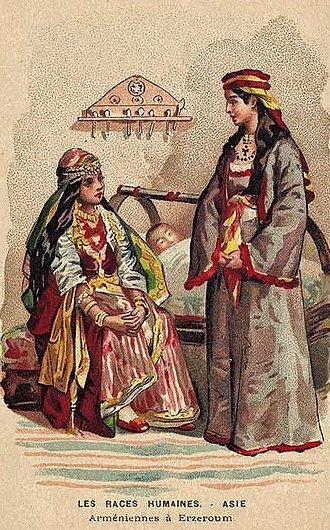
3. Craftsmanship: The Art of Metalwork and Jewelry
The Dwarves are famous for their skills as blacksmiths, miners, and jewelers, creating intricate items from precious metals. Armenia, with its long history of metallurgy, also boasts a rich tradition of metalwork and jewelry-making. Armenian craftsmen were known for producing exquisite silver and gold pieces, ranging from church crosses to ceremonial weaponry and jewelry.
Examples:
Armenian Crosses and Jewelry: The detailed filigree and gem-inlaid designs seen in Armenian religious artifacts show a high level of skill. These pieces could easily be imagined as treasures from the hoards of Erebor.
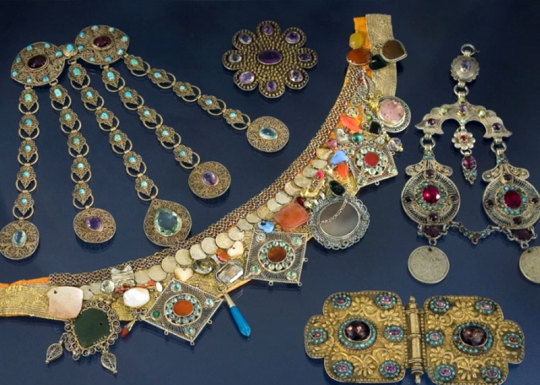


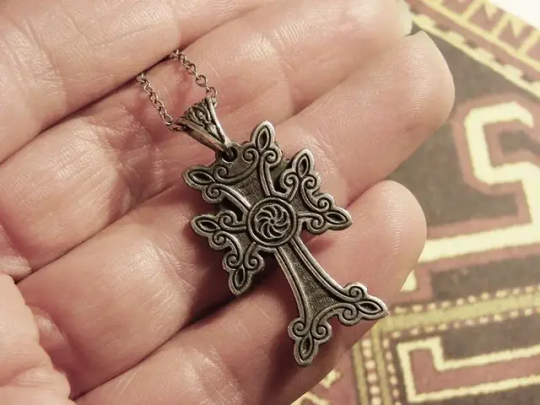
Ceremonial Swords and Armor: Historical Armenian weaponry, including richly adorned swords and shields, can also be found in museums. Their craftsmanship mirrors the care and pride of Dwarven smiths.
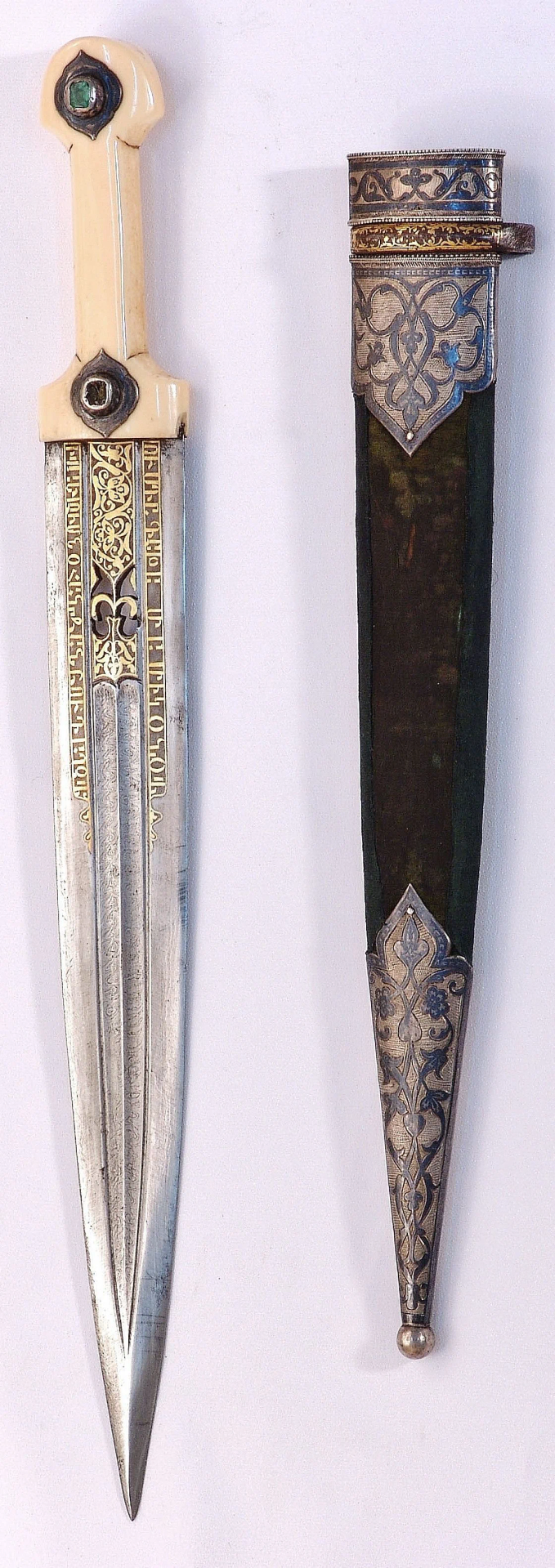
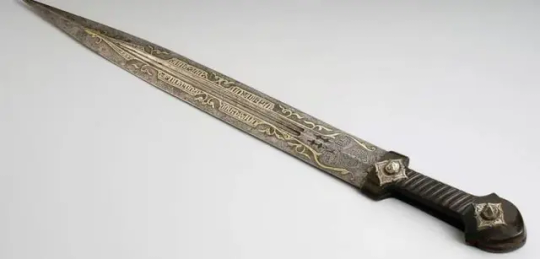
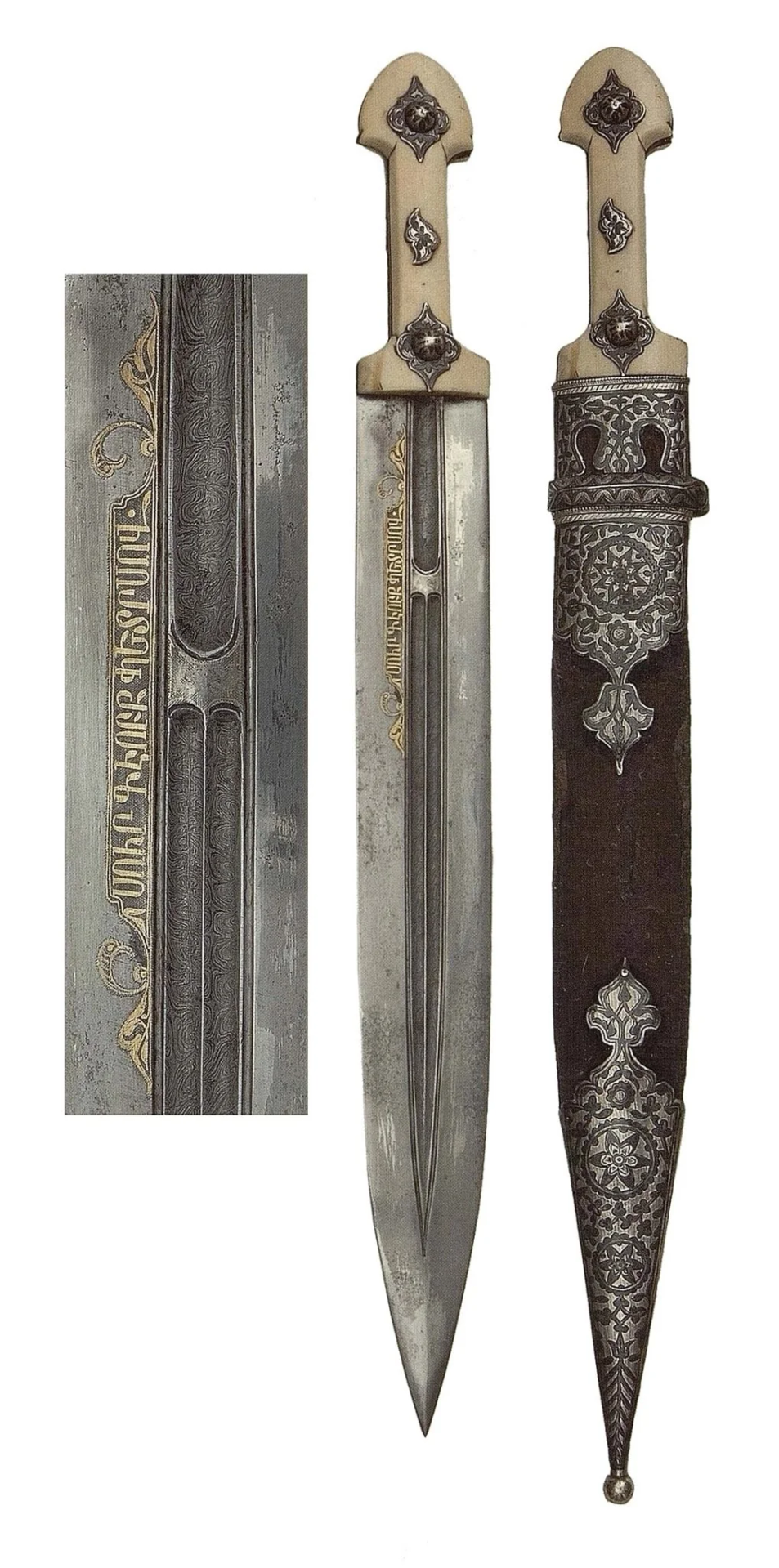
4. Resilience and Pride: A Shared Spirit of Survival
Both the Armenians and the Dwarves have a shared history of resilience and pride in their heritage. The Dwarves, displaced from their homeland of Erebor, strive to reclaim their lost kingdom, a narrative that echoes the Armenian struggle throughout history to preserve their culture and identity in the face of invasions and displacement.
Armenian history is marked by perseverance, whether through the maintenance of cultural traditions, language, or faith, even during periods of hardship. The Dwarves' determination to return to Erebor, despite the dangers, reflects a similar strength.
Examples:
Armenian Genocide Memorials: These monuments, while somber, speak to the resilience and enduring spirit of the Armenian people. They stand as a testament to survival, much like the return of the Dwarves to Erebor.
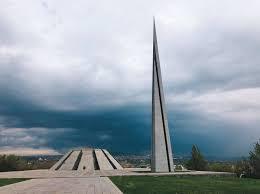
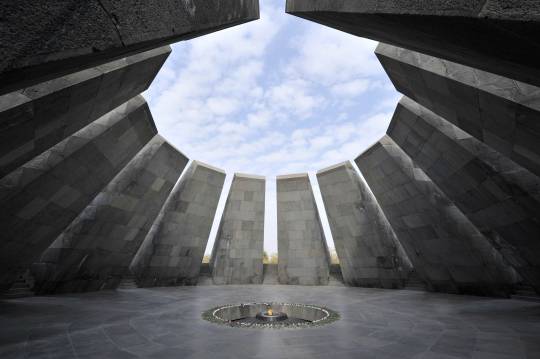
Mount Ararat: The iconic mountain, which has a deep connection to Armenian identity, is often depicted in art. It symbolizes endurance, much like the Lonely Mountain symbolizes hope for the Dwarves.
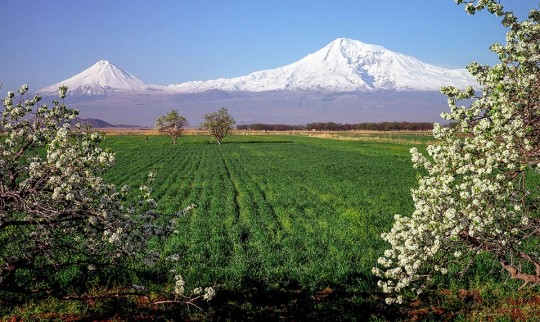
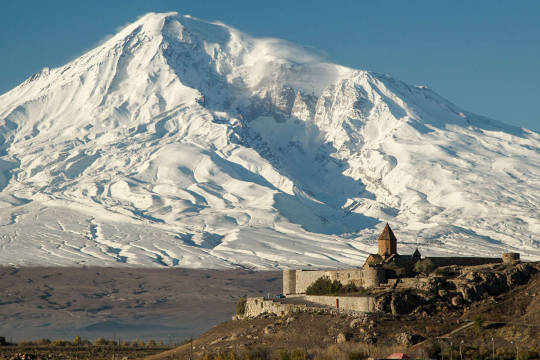

Conclusion
While there is no evidence that J.R.R. Tolkien based the Dwarves of Erebor on any specific real-world culture, the similarities between Dwarven and Armenian culture are striking. Both are defined by a love of stone, a tradition of intricate craftsmanship, and a deep-rooted pride in their heritage. These parallels offer a fascinating way to look at Tolkien's world.
103 notes
·
View notes